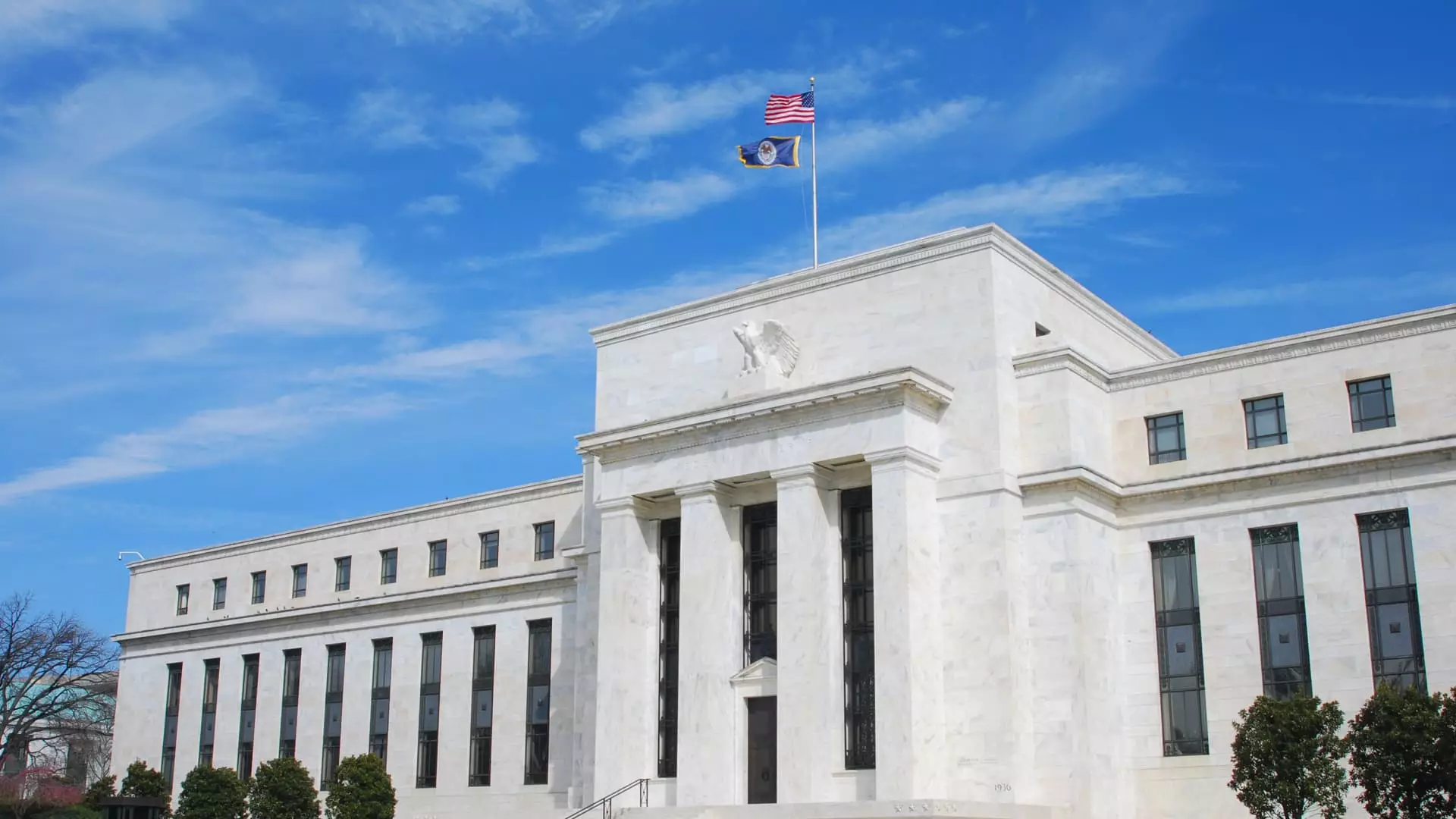The Federal Reserve’s decision to keep interest rates stable may sound responsible on the surface; however, it belies a deeper economic malaise that weighs heavily on the average American consumer. While some optimistic voices proclaim a temporary relief from inflation—a sentiment echoed by financial analysts—what they often overlook is the quiet storm brewing in the form of a potential trade war. With tariffs looming over Europe and other markets, the resulting disruption promises not just increased prices but a ripple effect that can jeopardize consumer confidence. This stagnation isn’t just a momentary pause; it’s a signal of a broader systemic imbalance, where the well-being of individual households falls at the mercy of macroeconomic decisions.
The Unseen Consequences of Monetary Policies
When the Federal Reserve hammers down on the federal fund rates, the indirect implications extend far beyond Wall Street. The rate adjustments dictate how much banks charge one another for overnight loans, but they also weave into the fabric of everyday costs for consumer loans, mortgages, and credit cards. As Greg McBride from Bankrate poignantly notes, American families are “stretched and stressed.” The central bank’s stabilizing measures may provide an illusion of control, but they effectively reinforce a culture of consumer debt that fuels economic anxiety. Tariffs and projected inflationary pressures are barriers that consumers cannot simply bypass by hoping for a rate reduction someday. Instead, they are left grappling with escalating costs in their daily lives.
Borrowing: A Double-Edged Sword
One might logically conclude that a stable interest rate could help lessen financial burdens on households, leading to a surge in borrowing as mortgage rates, auto loans, and credit card debts become more manageable. Yet, the reality is starkly different. With the Department of Commerce’s indicators reflecting a potential recession, any decrease in interest rates may not fully translate into relief. While current data shows slight declines in average mortgage rates—from 7.04% down to 6.77%—these numbers are misleading when viewed in historical context. Rates remain substantially high compared to previous years, limiting the financial flexibility that homeowners and prospective buyers so desperately need.
The Illusion of Progress: Stagnation in Disguise
In a seemingly positive trend, the average annual percentage rate for credit cards sagged to 20.09%, down from 20.27% earlier in the year. Yet, this gentle slope downward feels like too little, too late for families already submerged in revolving debts—which, it should be noted, saw an 8.2% annual rise according to the Federal Reserve’s consumer credit report. This striking contrast highlights a devastating reality: savvy consumers may recognize slight decreases in borrowing rates, yet they are competing against insurmountable inflation and rising prices across essential goods and services. The trade-offs are glaring; even as credit remains slightly more accessible, consumer purchasing power continues to dwindle.
The Auto Loan Dilemma: A Shifting Burden
For individuals eyeing new vehicles, the burden grows heavier as they navigate the tightrope of increasing vehicle prices and stalling loan rates. While reports show a drop in average auto loan rates to 7.42%, it simultaneously reflects a steadfast fact: car prices themselves are escalating due to inflationary pressures influenced by tariffs. Consumers find themselves in a catch-22 situation, where plans for investment in personal equity—like purchasing a car—become muddied by an uncertain economic climate and escalating prices. Each purchase not only signifies a personal investment but also a vote of confidence in an economy fraught with risk, making this a precarious moment for car buyers.
Student Loans: Fixed Rates and Heavy Hearts
Borrowers with newly acquired student loans for the upcoming academic year are facing even higher fixed rates, now at 6.53%. While students may think they are insulated from Federal decisions, these rates signify an uncomfortable trend. The increase only amplifies concerns about student debt’s long-term implications on economic mobility and individual futures. The rigidity of fixed rates fails to account for the overarching climate of economic distress, which hangs like a dark cloud over the education sector and its prospective return on investment.
Begging for Relief: The Fragile State of Savings
Even amidst mounting pressures, there is a silver lining found in savings rates, which have begun to pay off for consumers in ways not seen for over a decade. With many high-yield savings accounts providing returns upwards of 4.4%, it initially seems like a favorable environment to save. However, the question remains: How sustainable is this environment? With inflation knocking at the door and economic uncertainties persistently looming, the savings that might seem promising now could easily turn into a mere buffer against inevitable price spikes.
The Federal Reserve’s inaction may appear sound as a short-term strategy, but it reflects underlying vulnerabilities that have long-term repercussions for hardworking families. Each metric tells a story of an economy that hovers precariously, and without concerted effort for sustainable change, that narrative will only become more troubling.


Leave a Reply